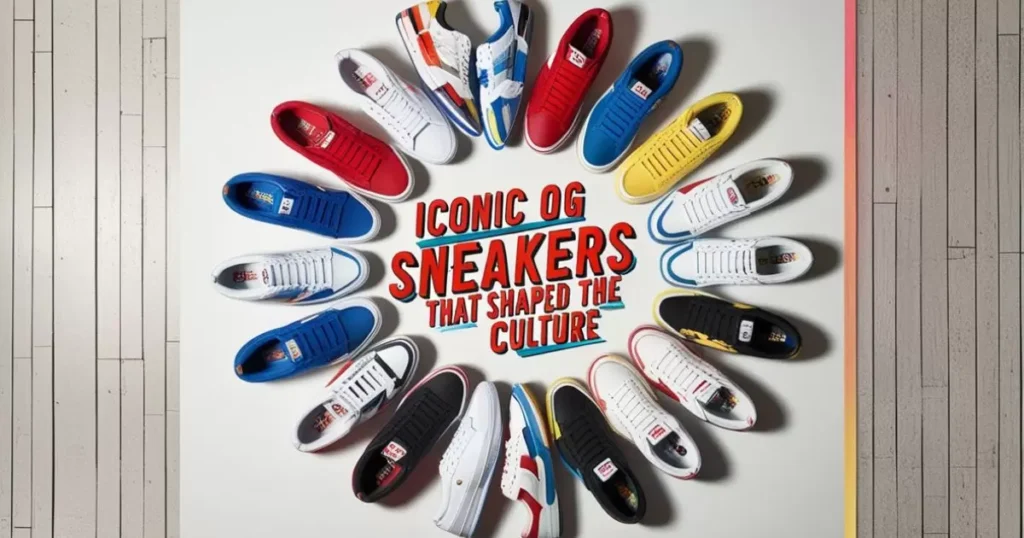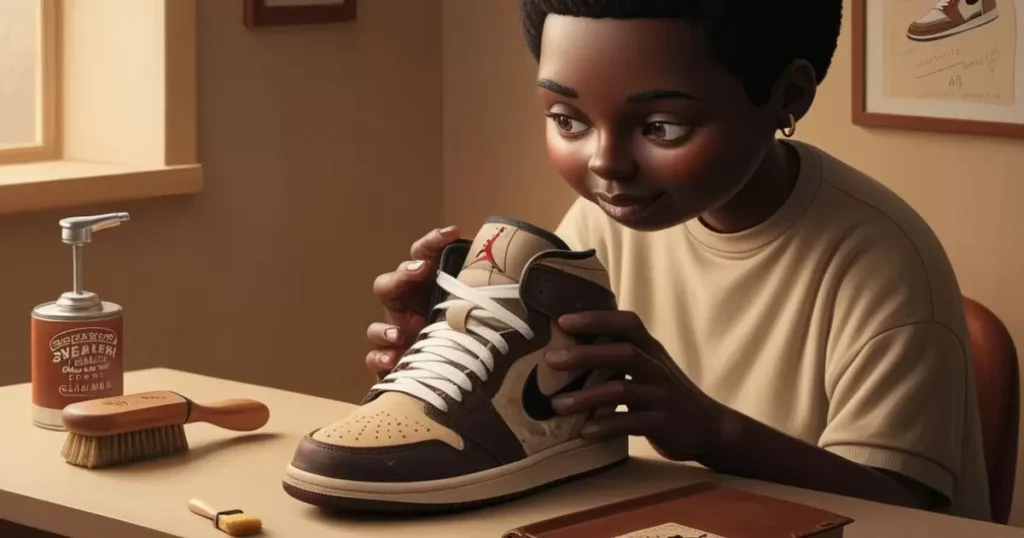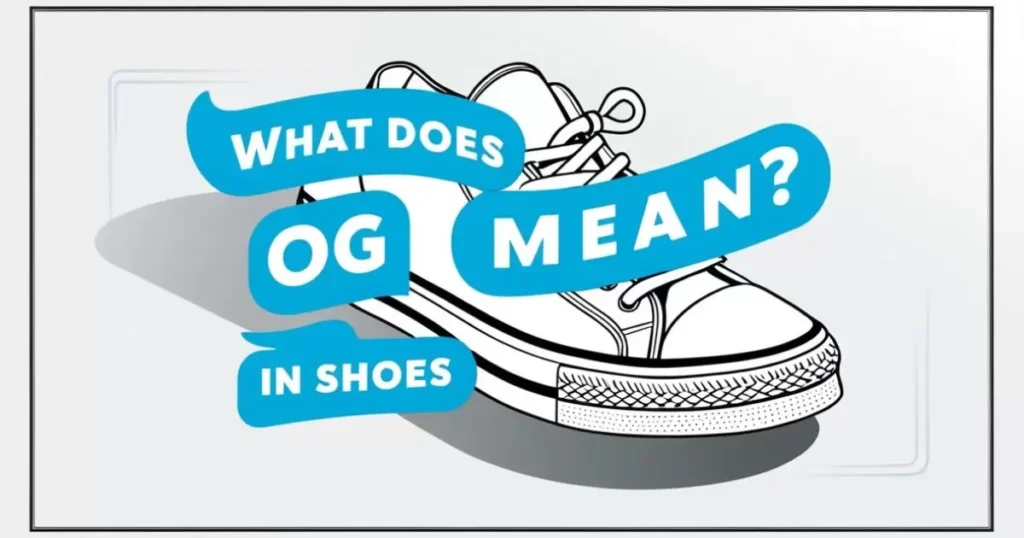In the vibrant world of sneaker culture, few terms carry as much weight as “OG.” But what does OG mean in shoes, and why does it matter so much to sneakerheads and casual fans alike? Let’s lace up and dive into the fascinating realm of OG kicks, exploring their history, impact, and enduring appeal.
The Birth of OG in Sneaker Lingo
The term “OG” originated in street culture, standing for “Original Gangster.” It was a mark of respect, denoting someone who’d been around the block and earned their stripes. As sneaker culture exploded in the 1980s and 90s, this term found a new home.
In footwear, OG took on a specific meaning:
- Original Release: The first-ever version of a shoe model
- Original Colorway: The initial color scheme of a particular design
- Original Materials: The exact components used in the first production run
Nike was among the first to capitalize on the OG concept, using it in marketing campaigns for retro releases of classic models. The Air Jordan line, in particular, embraced the OG terminology, creating a buzz around shoes that matched the specs of Michael Jordan’s on-court sneakers.
Decoding OG: More Than Just Original
While “original” is at the heart of OG, the term has nuances that sneaker enthusiasts prize. Let’s break it down:
| Aspect | OG Significance |
| Colorway | Must match the first release exactly |
| Materials | Should be identical or as close as possible to the original |
| Packaging | Often includes original-style boxes and tags |
| Release Date | Typically refers to models from the 80s and 90s |
OG vs. Original: Subtle Differences
Not all original releases are considered OG in sneaker culture. For instance:
- A 2023 release of a brand-new Nike model is original, but not OG.
- A 2023 re-release of the 1985 Air Jordan 1 “Chicago” in its original specs is considered OG.
The distinction lies in the model’s historical significance and its faithful reproduction of a classic.
The Role of Colorways in OG Status
Colorways play a crucial role in determining OG status. Take the Air Jordan 1, for example:
- OG Colorway: “Chicago” (White/Black/Red)
- Non-OG Colorway: “UNC to Chicago” (White/Black/Red/Blue)
Both use similar colors, but only the “Chicago” is considered truly OG because it was part of the original 1985 release.
The OG Hierarchy in Sneaker Releases
Not all OGs are created equal. Here’s a breakdown of the hierarchy:
- True OGs: The holy grail. These are unworn pairs from the original production run.
- Retro OGs: Faithful reproductions of the original model, often released years or decades later.
- Inspired-by OGs: Modern twists on classic designs, using elements of the original.
Limited vs. General Releases
The exclusivity factor plays a significant role in the OG world:
- Limited OG Releases: Often more valued due to scarcity
- General OG Releases: More accessible but may have less resale value
“OG isn’t just about being first. It’s about capturing a moment in sneaker history and bringing it back to life.” – DJ Clark Kent, Sneaker Influencer
Iconic OG Sneakers That Shaped the Culture

Let’s look at some game-changing OG models:
- Air Jordan 1 “Chicago” (1985)
- Michael Jordan’s first signature shoe
- Banned by the NBA, creating massive publicity
- Resale value: $20,000+ for original 1985 pairs
- Nike Air Max 1 (1987)
- Designed by Tinker Hatfield
- First shoe to feature visible Air cushioning
- Original colorway: White/Red
- Adidas Superstar (1969)
- Worn by NBA legend Kareem Abdul-Jabbar
- Adopted by hip-hop culture in the 80s
- Shell toe design became iconic
- Converse Chuck Taylor All-Star (1917)
- One of the oldest continuously produced sneakers
- Named after basketball player Chuck Taylor in 1932
- OG status applies to both high and low-top versions
- Vans Old Skool (1977)
- First Vans shoe to feature the iconic side stripe
- Beloved by skateboarders and musicians
- OG colorway: Navy/White
The OG Effect on Sneaker Economics
OG releases have a profound impact on the sneaker market:
Resale Market Dynamics
- OG models often command premium prices in the secondary market
- Condition is crucial: deadstock (unworn) OGs fetch the highest prices
- Rarity and historical significance drive up value
Retail Pricing Strategies
Brands leverage OG status in their pricing:
- Limited OG releases are often priced higher than standard models
- “OG” branding can justify price increases for retro releases
Collector’s Perspective: Investment Potential
Many sneakerheads view OG releases as investments:
- Some OG models appreciate significantly over time
- Original production runs from the 80s and 90s are especially valuable
- Proper storage and care are essential for maintaining value
Spotting the Real Deal: Authenticating OG Sneakers
With high resale values comes the risk of counterfeits. Here’s how to spot authentic OGs:
Key Visual Indicators
- Stitching: Should be clean and consistent
- Shape: Compare to known authentic pairs
- Labels: Check for correct font and placement
Material and Construction Differences
- Leather quality: OGs often use higher-grade materials
- Midsole: Check for correct density and texture
- Outsole: Verify tread pattern and rubber compound
Box and Packaging Tells
- Box labels: Should match the production period
- Tissue paper: Often specific to the era
- Extras: Original hang tags or leaflets can indicate authenticity
The Role of Technology in Authentication
Modern tools are making authentication easier:
- UV light checks: Reveal hidden markings on some OGs
- AI-powered apps: Compare shoes to vast databases of authentic pairs
- Blockchain: Some brands are exploring digital authentication methods
Preserving the Legacy: Caring for OG Sneakers

Proper care is crucial for maintaining OG sneakers:
Storage Tips for Collectors
- Store in a cool, dry place away from direct sunlight
- Use silica gel packets to control moisture
- Keep shoes in their original boxes when possible
Cleaning and Maintenance Best Practices
- Clean gently with appropriate products for each material
- Avoid harsh chemicals that can damage vintage materials
- Use shoe trees to maintain shape when not wearing
Wear vs. Display: The Collector’s Dilemma
Many collectors grapple with whether to wear their OGs or keep them pristine:
- Wearing: Allows you to enjoy the shoes as intended
- Displaying: Preserves condition and value
- Middle ground: Some collectors buy two pairs—one to stock, one to rock
OG Influence Beyond the Sneaker World
The impact of OG sneakers extends far beyond footwear:
Fashion Industry Crossovers
- High-fashion brands like Balenciaga and Gucci have created luxury versions of OG sneaker styles
- Collaborations between streetwear brands and traditional fashion houses often reference OG designs
Music and Pop Culture References
- Hip-hop lyrics frequently name-drop OG sneaker models
- Movies and TV shows use OG sneakers to establish character and time period
Art and Design Inspirations
- Artists like KAWS and Takashi Murakami have collaborated on OG-inspired sneaker designs
- Sneaker-themed art exhibitions have become popular in galleries worldwide
The Future of OG in an Ever-Evolving Market

As the sneaker world continues to evolve, so does the concept of OG:
Sustainability Challenges and Solutions
- Brands are exploring eco-friendly materials that mimic original specs
- Some companies offer recycling programs for worn-out OG sneakers
Digital OGs: NFTs and Virtual Sneakers
- Non-fungible tokens (NFTs) are creating a new category of “digital OGs”
- Virtual sneakers in games and metaverse platforms often reference classic OG designs
Predictions from Industry Insiders
- Continued focus on storytelling around OG releases
- Potential for augmented reality (AR) experiences tied to OG sneakers
- Increased use of made-to-order production for OG models to reduce waste
Why OG Will Always Matter
In a world of constant innovation, OG sneakers remain a touchstone for enthusiasts and casual fans alike. They represent not just a shoe, but a piece of history—a snapshot of design, technology, and culture frozen in time.
The appeal of OG sneakers lies in their ability to connect us to pivotal moments in sports, music, and fashion. Whether it’s the shoe Michael Jordan wore during his rookie season or the kicks your favorite rapper mentioned in a classic track, OGs carry a weight that transcends mere footwear.
For collectors, OG sneakers are prized possessions and potential investments. For wearers, they’re a way to make a statement and pay homage to sneaker heritage. And for the industry, OG models provide a wellspring of inspiration and a reliable source of hype.
As we look to the future, one thing is clear: the legacy of OG sneakers will continue to shape the culture, influence design, and capture the imagination of sneakerheads for generations to come. So next time you lace up a pair of classics or eye that retro release, remember—you’re not just wearing a shoe, you’re stepping into history.
Frequently Asked Questions
1. Q: What does OG stand for in sneaker terminology?
A: In sneakers, OG stands for “Original” or “Original Gangster,” referring to the first release of a particular shoe model or colorway.
2. Q: Are all first releases of sneakers considered OG?
A: Not necessarily. While OG typically refers to first releases, the term is most commonly used for classic models from the ’80s and ’90s that have significant cultural impact.
3. Q: How can I tell if a sneaker is truly OG?
A: Look for exact matches in colorway, materials, and design to the original release. Check production dates, box designs, and consult authentication guides or experts.
4. Q: Do OG sneakers always cost more than newer releases?
A: Generally, yes. OG sneakers, especially in good condition, often command higher prices due to their historical significance and rarity.
5. Q: Can a retro release be considered OG?
A: While not technically original, retro releases that faithfully reproduce the original specs are often referred to as “OG retros” or “retro OGs” by sneaker enthusiasts.

An author is a creator of written content, producing works ranging from books and articles to blog posts and essays. They use their creativity, knowledge, and research to inform, entertain, or persuade readers. Authors often have a unique voice and perspective, contributing significantly to literature and various media.

